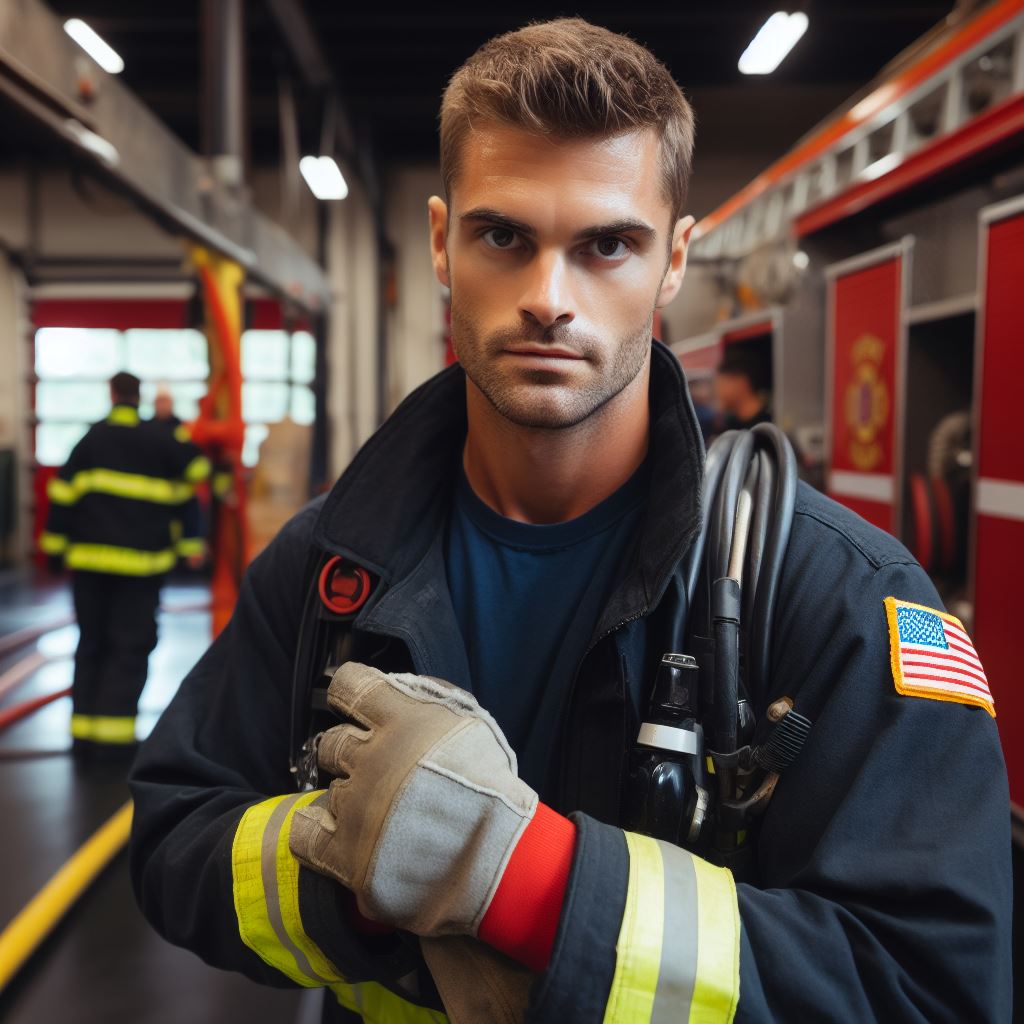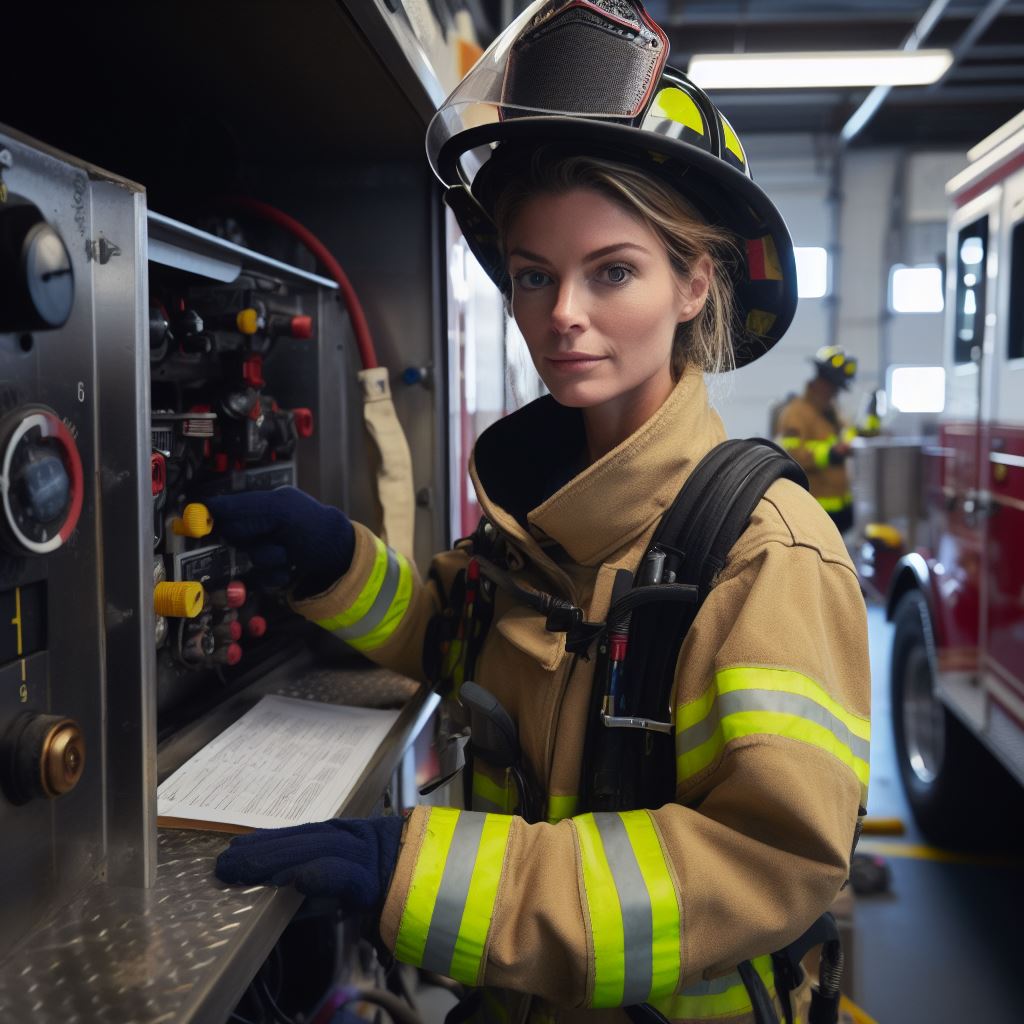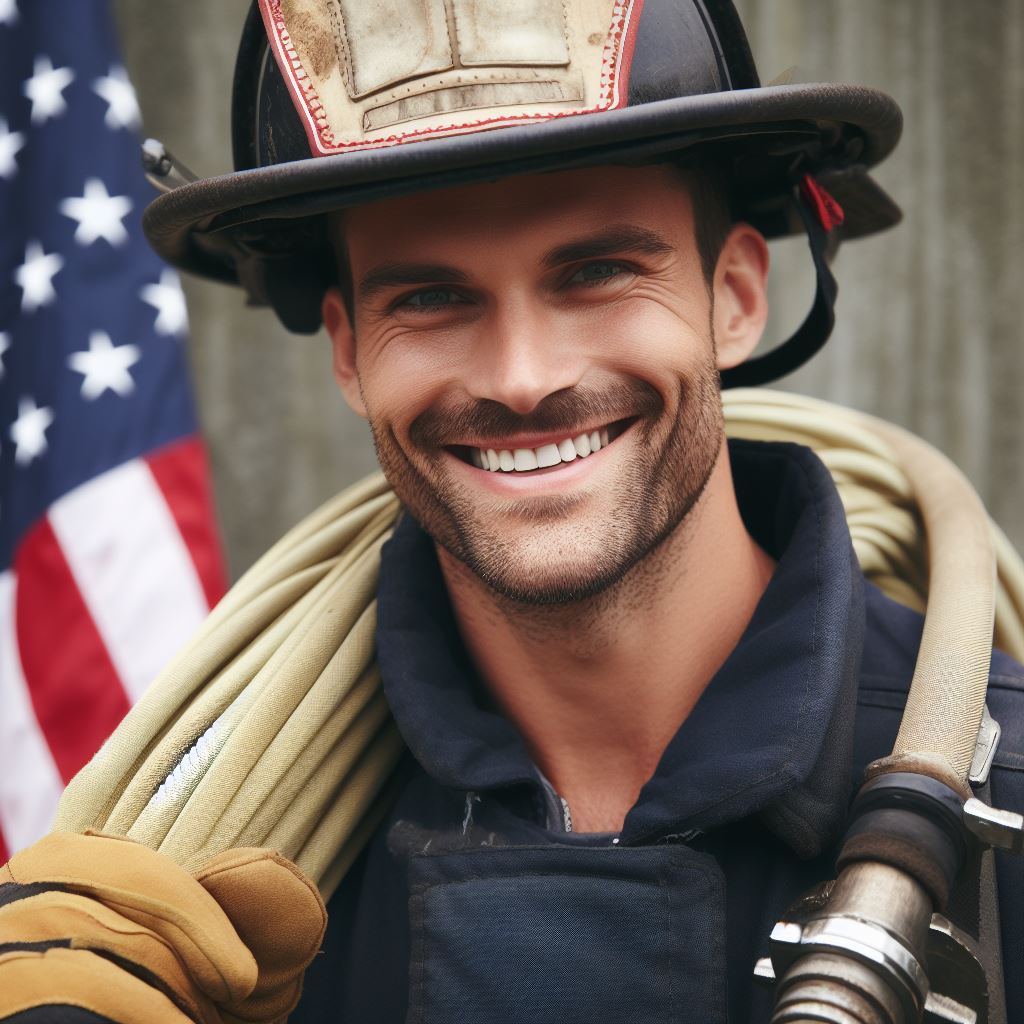Introduction
Importance of diversity in fire
Diversity is not only a buzzword but an integral aspect of success in fire departments across the United States.
Fire departments serve diverse communities, and it is crucial that their workforce represents and understands the various demographics they serve.
In recent years, there has been a growing recognition of the importance of diversity in fire departments.
Including individuals from diverse backgrounds, genders, races, and ethnicities enriches problem-solving and decision-making processes in these departments with unique perspectives and experiences.
However, despite the increasing awareness, U.S. fire departments continue to face significant challenges in achieving diversity.
One key challenge is the recruitment and retention of underrepresented groups.
The fire service has historically been predominantly white and male, making it challenging to attract and retain individuals from diverse backgrounds.
Another challenge is the need to establish inclusive environments within fire departments.
Prejudices, biases, and microaggressions can create barriers for individuals from diverse backgrounds, hindering their professional growth and advancement within the organization.
It is imperative for fire departments to actively address these issues and foster inclusive cultures that value and respect the contributions of all firefighters.
To overcome these challenges, fire departments are implementing various strategies.
These include targeted recruiting efforts, outreach programs to engage underrepresented communities, and cultural competency training for all personnel.
Furthermore, actively promoting and celebrating diversity within the department can help create an inclusive atmosphere and attract a more diverse pool of candidates.
In general, diversity in U.S. fire departments is essential for effective emergency response and community outreach.
While challenges persist, the fire service is taking steps to address these issues and create more inclusive environments.
By embracing diversity, fire departments can better serve their communities and ensure safer outcomes for all.
Historical context
Historically homogeneous composition of fire departments
Fire departments in the United States have traditionally been composed of a homogeneous workforce. The majority of firefighters were white males, capturing the essence of a homogenous environment.
This lack of diversity reflected the social and cultural realities of the time.
Historically, fire departments were seen as exclusive clubs, with recruitment and promotion processes heavily influenced by racial and gender biases.
This created significant barriers for underrepresented groups, making it challenging for them to join or advance within fire departments.
The absence of diversity within fire departments reflected broader societal challenges related to equality and inclusion.
Firefighting was often seen as a defining masculine profession, further limiting opportunities for women and people of color.
Diversification efforts that have taken place over the years
Over the years, there has been a growing recognition of the importance of diversity in fire departments.
Efforts to diversify these departments have included outreach programs, targeted recruitment strategies, and community engagement initiatives.
The goal has been to increase representation and create a more inclusive and balanced workforce.
One notable effort has been the establishment of diversity task forces and advocacy groups within fire departments.
These entities focus specifically on promoting diversity through various means, including education, awareness campaigns, and recruitment drives targeting underrepresented groups.
Another strategy pursued is the implementation of structured mentorship programs.
These initiatives provide guidance and support to individuals from diverse backgrounds, helping them navigate career progression and overcome any initial obstacles they may encounter.
Assessment of the progress made in promoting diversity
While progress has been made in promoting diversity within fire departments, there is still much work to be done.
Efforts to diversify these departments have faced challenges such as resistance to change, implicit biases, and outdated recruitment practices.
However, there are success stories that highlight the effectiveness of diversification efforts.
Many fire departments have successfully increased the representation of women and people of color, creating a more inclusive and representative workforce.
The benefits of diversity in fire departments are evident.
Studies have shown that diverse teams bring different perspectives, experiences, and problem-solving approaches, leading to better decision-making and improved service delivery.
To further promote diversity, fire departments must continue to prioritize inclusive recruitment practices, establish clear pathways for career advancement, and provide ongoing training on diversity and inclusion.
Efforts should be made to create safe and supportive work environments that value and celebrate differences.
In fact, the historically homogeneous composition of fire departments in the United States has gradually changed over the years. Steps have been taken to diversify these departments and promote inclusivity.
While progress has been made, there is still a need for ongoing commitment and effort to create truly diverse and inclusive fire departments that reflect the rich diversity of the communities they serve.
Current state of diversity in U.S. fire departments
Statistical data on the representation of different racial and ethnic groups
- In recent years, there has been a push for increased diversity in U.S. fire departments.
- From the statistical data available, it is evident that there is still a lack of diversity.
- African Americans and Hispanics are underrepresented in fire departments across the country.
- These racial and ethnic groups make up a smaller percentage of the firefighter workforce.
- Efforts are being made to close this gap and increase diversity in fire departments.
- Recruitment and outreach programs targeting underrepresented groups have been implemented.
- However, progress has been slow, and more work needs to be done to achieve true diversity.
- It is crucial to address the barriers and biases that prevent diverse individuals from entering the profession.
Examination of gender diversity
- In addition to racial and ethnic diversity, gender diversity within fire departments is also an important aspect.
- Historically, firefighting has been a male-dominated profession.
- While progress has been made, women still face significant challenges in entering and advancing in the field.
- Female representation in fire departments remains low compared to their male counterparts.
- Barriers such as physical fitness standards and cultural perceptions of gender roles contribute to this imbalance.
- Efforts are being made to recruit and retain more women in firefighting positions.
- Creating inclusive environments and providing support systems can help break down gender barriers.
- Increasing gender diversity not only promotes equality but also brings unique perspectives and skills to the fire service.
Assessment of the representation of individuals from underprivileged backgrounds
- Representation of individuals from underprivileged backgrounds is an area of concern in fire departments.
- People from economically disadvantaged communities often face barriers to entry into firefighting careers.
- Limited access to resources, education, and training opportunities can prevent individuals from pursuing firefighting.
- Increasing representation from underprivileged backgrounds is essential for fostering diversity and equal opportunities.
- Departments should focus on outreach programs that target communities with high poverty rates.
- Providing scholarships, mentorship, and career guidance can help individuals overcome systemic barriers.
- By diversifying the fire service, departments can better serve their communities and address unique challenges.
- It is important to recognize that diversity goes beyond representation and should be embraced at all levels of the department.
In short, the current state of diversity in U.S. fire departments reveals ongoing challenges.
The representation of different racial and ethnic groups, gender diversity, and individuals from underprivileged backgrounds remains insufficient.
Efforts to address these disparities are being made, but progress is slow.
It is vital for fire departments to continue implementing recruitment and retention strategies, breaking down barriers, and fostering inclusive environments.
True diversity can enhance the effectiveness and inclusivity of fire departments, ensuring they reflect the communities they serve.
Underlying factors affecting diversity
Lack of awareness and recruitment strategies within marginalized communities
- Fire departments often lack effective strategies to reach out and raise awareness within marginalized communities.
- These communities may not be aware of the opportunities and benefits of a career in the fire department.
- Limited outreach and recruitment efforts result in a small pool of diverse candidates for fire department positions.
- To improve diversity, fire departments should prioritize targeted outreach and community engagement programs.
- Efforts should include partnerships with community organizations and schools to promote the fire department as a viable career option.
Persistence of stereotypes and biases in recruitment and promotional processes
- Stereotypes and biases play a significant role in the recruitment and promotional processes of fire departments.
- Many individuals still hold the perception that firefighting is a predominantly male profession.
- Such biases may result in unconscious or intentional discrimination against candidates from underrepresented groups.
- Fire departments must actively address these biases by implementing fair selection criteria and promotion practices.
- Objective assessments should be used to evaluate candidates based on their skills and qualifications rather than societal stereotypes.
Barriers related to physical requirements and cultural expectations
- Existing physical requirements in fire departments can pose challenges for individuals from diverse backgrounds.
- Height and strength requirements, for example, may disproportionately discourage women and certain ethnic groups.
- Fire departments should review and modify physical requirements to ensure they are relevant and inclusive.
- Additionally, cultural expectations within the fire department can create barriers for diverse candidates.
- Efforts should be made to foster an inclusive and supportive environment that respects and values diversity.
Read: Women in the U.S. Military: Breaking Barriers & Traditions
The importance of diversity in fire departments
Enhancement of community engagement and trust
- Diverse fire departments foster stronger connections and understanding with diverse communities.
- Representation from different backgrounds can bridge cultural gaps and build trust within communities.
- Relatable firefighters can better connect with minority groups and address their unique needs and concerns.
- Increased trust leads to a higher likelihood of cooperation during emergencies and greater community participation in prevention efforts.
- A diverse workforce improves public perception and shows commitment to inclusivity and equality.
Improved problem-solving and innovation through diverse perspectives
- Different viewpoints allow for a broader range of ideas and approaches to tackle complex challenges.
- Diverse teams bring together varied experiences and skills, leading to creative problem-solving.
- Enhanced diversity fosters an environment that encourages diverse voices to be heard, promoting innovation.
- Challenging existing practices and assumptions can lead to more effective strategies for firefighting.
- A diverse workforce enables fire departments to adapt to changing community needs and expectations.
Enhanced effectiveness in responding to diverse emergencies
- Fires and emergencies affect communities differently, requiring diverse perspectives to address them effectively.
- Bilingual firefighters can communicate with non-English speaking individuals during emergencies, ensuring their safety.
- Cultural understanding allows firefighters to respond sensitively and appropriately in diverse communities.
- Diverse skillsets ensure a broader range of capabilities and knowledge to handle various emergency situations.
- Fire departments with diversity can better serve marginalized communities and provide equitable support.
Read: Military Technology: Tools of the Modern American Soldier
Transform Your Career Today
Unlock a personalized career strategy that drives real results. Get tailored advice and a roadmap designed just for you.
Start NowAddressing the challenges and promoting diversity
Implementing proactive and targeted recruitment strategies
- Collaborate with community organizations to reach diverse candidates and promote fire department careers.
- Develop partnerships with schools and universities to introduce firefighting as a viable and inclusive career option.
- Offer recruitment events specifically targeting underrepresented communities and provide information about the application process.
- Use social media platforms and online job boards to advertise job openings and reach a wider audience.
Enhancing diversity training and cultural competency programs
- Provide comprehensive diversity training to all firefighters and department personnel.
- Include sessions on cultural competency, implicit bias, and fostering inclusive work environments.
- Continuously update training programs to address emerging challenges and promote diversity awareness.
- Encourage participation in workshops and seminars focused on diversity and inclusion in the fire service.
Establishing mentorship and support networks for underrepresented firefighters
- Implement mentorship programs pairing senior firefighters with newly hired, underrepresented individuals.
- Create safe spaces for dialogue and support among employees from diverse backgrounds.
- Offer resources such as counseling services, affinity groups, and employee resource networks.
- Provide opportunities for career advancement and recognition of achievements among underrepresented firefighters.
By implementing proactive and targeted recruitment strategies, fire departments can improve diversity within their ranks.
Collaborating with community organizations and educational institutions can help attract candidates from underrepresented communities.
Utilizing social media and online platforms can further expand the reach for potential applicants.
Enhancing diversity training and cultural competency programs is crucial for promoting inclusivity within fire departments.
By offering comprehensive training and addressing implicit bias, firefighters can develop a better understanding of diverse cultures and create a more respectful and accepting workplace.
Establishing mentorship and support networks is key to retaining and fostering the development of underrepresented firefighters.
Mentorship programs can provide guidance, support, and connection with experienced individuals.
Creating safe spaces and offering resources like counseling services can also contribute to the well-being and satisfaction of diverse employees.
Addressing challenges and promoting diversity in U.S. fire departments demands proactive strategies like targeted recruitment, enhanced diversity training, and established mentorship programs.
By implementing these measures, fire departments can create a more inclusive and representative workforce, effectively serving their communities while celebrating the diversity within them.
Read: The Training Rigor: Preparing for Combat & Peacekeeping

Discover More: Inside the World of Homicide Detectives: A Day’s Work
Successful initiatives and best practices
Examples of fire departments that have achieved commendable diversity
- The Los Angeles Fire Department has implemented effective diversity recruitment strategies.
- NYFD has successfully increased the number of women and racial minorities in their ranks.
- The Seattle Fire Department has actively promoted diversity and inclusion through targeted hiring practices.
- Chicago Fire Department has made significant strides in diversifying their workforce through outreach programs.
- San Francisco Fire Department has been recognized for its efforts to create a diverse and inclusive work environment.
Successful community outreach programs:
- The Phoenix Fire Department’s ‘Fire Up’ program educates and recruits underrepresented communities.
- The Houston Fire Department actively engages with local schools to inspire diverse youth to pursue firefighting careers.
- Denver Fire Department conducts workshops and provides mentoring opportunities to foster diversity.
- Miami-Dade Fire Rescue’s ‘Community Fire Cadet’ program exposes diverse students to the fire service.
- The Atlanta Fire Rescue Department collaborates with community organizations to promote inclusivity in firefighter recruitment.
Sharing best practices in overcoming diversification challenges
- Establishing formal diversity committees within fire departments to address barriers and develop solutions.
- Providing cultural competency training to firefighters to ensure an inclusive work environment.
- Implementing strategic recruitment campaigns that target diverse populations and underrepresented communities.
- Offering financial incentives or scholarships to attract diverse candidates to the fire service.
- Creating mentorship programs for underrepresented firefighters to foster growth and retention.
These successful initiatives and best practices demonstrate how fire departments are actively working towards achieving diversity.
Highlighting diverse fire departments, discussing successful outreach programs, and sharing best practices enable departments to learn and implement effective diversification strategies.
Read: Top U.S. Military Bases: Key Locations & Their Importance
Challenges and opportunities for the future
Identifying persistent barriers to diversification
In order to promote diversity in U.S. fire departments, it is crucial to identify and address the persistent barriers that hinder progress. These barriers can include:
- Lack of representation: One of the main obstacles to diversification is the underrepresentation of certain demographic groups in the fire service.
- Recruitment challenges: Fire departments often face difficulties in attracting diverse candidates due to limited outreach efforts and biases in the recruitment processes.
- Cultural and institutional biases: Existing cultural and institutional biases may contribute to an unwelcoming environment for individuals from underrepresented groups.
- Unconscious biases: Implicit biases, such as stereotyping or prejudiced attitudes, can affect decision-making and hinder equal opportunities for all applicants.
- Limited resources: Financial constraints within fire departments may limit their ability to invest in diversity and inclusion initiatives.
By identifying and acknowledging these persistent barriers, fire departments can begin to develop strategies to overcome them and create a more diverse workforce.
Potential policy changes and legislative efforts
Policy changes and legislative efforts play a significant role in shaping the future of diversity in U.S. fire departments. Some potential actions include:
- Implementing diversity quotas: Set specific diversity targets to ensure equal representation of underrepresented groups in fire departments.
- Creating inclusive recruitment practices: Implement blind hiring processes and remove potential biases from recruitment methods.
- Promoting cultural awareness: Incorporate cultural competency training for firefighters and highlight the importance of diversity and inclusion within the fire service.
- Allocating resources: Advocate for increased funding to support diversity initiatives, such as targeted outreach programs and mentoring opportunities.
By enacting these policy changes and legislative efforts, fire departments can enhance diversity and ensure a more inclusive and equitable environment.
Exploring the role of public advocacy and community partnerships
Public advocacy and community partnerships can significantly contribute to fostering diversity in U.S. fire departments.
Here’s how:
- Building community trust: Engage with local communities and establish meaningful relationships to bridge gaps and encourage diverse individuals to join the fire service.
- Collaborating with diverse organizations: Partner with community organizations that focus on diverse populations, involving them in recruitment efforts and mentorship programs.
- Supporting educational initiatives: Collaborate with schools and universities to create pathways for underrepresented students to pursue careers in the fire service.
- Raising awareness: Engage in public campaigns that highlight the importance and benefits of diversity in fire departments, challenging stereotypes and biases.
By leveraging the power of public advocacy and community partnerships, fire departments can strengthen their approach to diversity and actively build inclusive environments.
See Related Content: A Day in the Life of a U.S. Security Guard: What to Expect
Conclusion
Importance of diversity in U.S. fire departments
Diversity in U.S. fire departments is crucial for several reasons. First, it promotes a more inclusive and representative workforce, allowing for better understanding and communication with diverse communities.
Second, diverse perspectives and experiences can enhance problem-solving and decision-making within the department. Third, it helps to reduce biases and stereotypes, creating a more inclusive work environment.
Final thoughts on the current trends and potential solutions for promoting diversity
While progress has been made in increasing diversity within U.S. fire departments, challenges persist.
It is essential for fire departments to prioritize recruitment efforts aimed at attracting candidates from underrepresented groups.
Additionally, diversity training and cultural competency programs can help create a more inclusive and supportive work environment for all firefighters.
Continuous evaluation and improvement of diversity initiatives are necessary to ensure sustainable progress.
Call to action for individuals, fire departments, and communities to prioritize diversity and inclusivity
We must recognize that achieving diversity in fire departments requires collective effort.
Individuals can actively support diversity by considering firefighting as a viable career option and advocating for equal opportunities.
Fire departments should actively recruit and retain diverse candidates, develop mentorship programs, and provide resources for cultural education.
Communities should engage in dialogue around fire department diversity and encourage representation and inclusivity within their local departments.
In the end, diversity in U.S. fire departments is not just a matter of social justice, it is essential for effective and inclusive emergency response.
By prioritizing diversity and inclusivity, we can build stronger fire departments that better serve and reflect the diverse communities they protect.
[E-Books for Sale]
The Big Book of 500 High-Paying Jobs in America: Unlock Your Earning Potential
$19.99 • 500 High-Paying Jobs • 330 pages
Explore 500 high-paying jobs in America and learn how to boost your career, earn more, and achieve success!
See All 500 High-Paying Jobs of this E-Book
1001 Professions Without a Degree: High-Paying American Jobs You Can Start Now
$19.99 • 1001 Professions Without a Degree • 174 pages
Discover 1001 high-paying jobs without a degree! Unlock career tips, skills, and success strategies for just $19.99!




